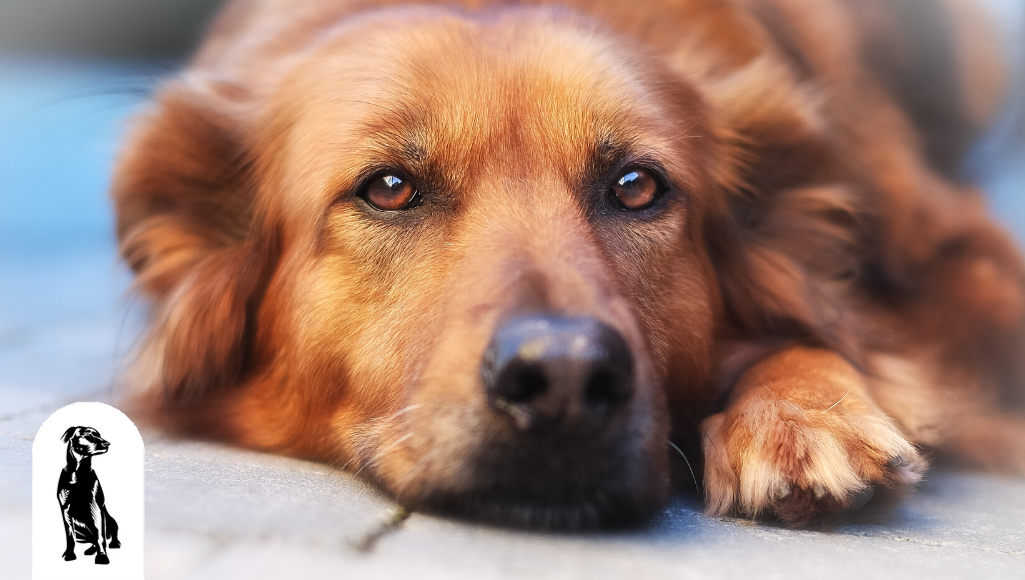
Dogs are amazing when it comes to their senses. If you've ever wondered what the phrase, "the eyes are the window to the soul" is all about, look at a dog and really see them as the amazing animals they are. Continue to scroll down to see 20 amazing facts about a dog's vision and prepare to be shocked.
Facts About Your Dog's Vision
Wouldn't it be great if we could know what dogs think, why they do some things and facts about their senses? In a series of three blogs, we'll break down facts about dog's vision, hearing, and smell, so sit back and be amazed.

1. Dogs have excellent night vision because they have a history as hunters.
Amazingly, they can see five times dimmer light than what humans can see. This is partly due to their evolutionary past as crepuscular (appearing or active in twilight) hunters. Their ancestors fed on critters that were most active during these times, at dusk and dawn.
2. Dog retinas have a larger rod density compared to cones than humans.
This means that rods and cones have specialized cells known to have important functions, and these rod cells enable a dog to detect and follow movement. They also allow dogs to see dim light better than humans. This doesn't mean they have the best visual acuity, however, (20/75) as opposed to humans with excellent eyesight of 20/20. They have reduced ability to identify fine details, and people have problems with color perception.
On the other hand, cones allow for color detection but don't help in low light conditions. This is why our retinas have lots of cones dues to our evolutionary history requiring us to have a need for distinguishing colors. It also goes back to humans needing to differentiate ripe fruits.

3. Dogs have a hard time discriminating between red and green (deuteranope).
They have two types of functioning eye cone cells that enable them to see color, making them dichromates. Us humans have three types of cones, which makes us trichromats. Dogs can detect yellow and blue much better than red and green, which is why you usually see obstacles with those colors in the sport of agility. Next time you choose a dog toy, look for blue ones instead of red.
4. The blue in huskie's eyes (or any other dog or human) is just an optical illusion.
Amazing right? When you stare into those gorgeous eyes, you're really not seeing blue pigment. It's due to the way light enters and exits the eye and creates the appearance of blue. In reality, when we stare into "blue skies" that outer space is not blue at all.

5. A mirror-like layer is found behind the dog's retina, called tapetum lucidum, and is what creates "eyeshine."
According to the author, John Bradshaw, in his book, "Dog Sense: How the New Science of Dog Behavior Can Make You a Better Friend," this specialized structure helps dogs get the most out of small amounts of light. The term comes from the Latin words "carpet of light." So, when light enters the eye, it hits the retina and then mirrors off the tapetum, which provides the cells of the retina with a second chance to sense it.
What you see when dogs show that Halloween-like eyeshine when a flashlight or car's headlines hit this area is from the presence of tapetum lucidum — The green color is due to the layer of shiny cells lining this structure.
6. Border collies possess a "giving eye."
Border collies stalk and stare earnestly at sheep, which controls the flock. They lower their bodies and stare at the sheep, showing them a psychological pressure to move. Sheep responds to this behavior since it mimics a wolf's hunting tactic of selecting a victim from the herd by capturing its eye before chasing them.
7. Your pup's pupil is merely a black hole.
Look into your pup's eye. What do you see? It probably looks like a black circle; however, it's just a black hole that appears that way because of the light-absorbing pigments located in the interior portions of the eye. Cool huh?
8. What makes those brown eyes so beautiful?
Brown-eyed dogs are known to have a larger concentration of melanin in their iris than dogs with lighter colored eyes.9. Sighthounds are favored with a visual streak, a horizontal area in the retina lined up with ganglion cells.
In the past, when sighthounds spent their days spotting prey over the desert, having a visual streak definitely came in handy.

10. Bullmastiffs are nicknamed the "Gamekeeper's Night Dog" for an important reason.
Their job included protecting large swaths of land of the nobles that had exclusive rights over game within their properties from poachers who hunted for fish, birds, and wildlife. The dogs had to pay strict attention to their surroundings in dim light and were required to wear a specific coat that allowed them to be camouflaged and hide in the dark.
11. A distinct characteristic of Keeshonds is wearing "glasses."
They feature dark lines that run from the eye's outer corner to the base of their ears, mimicking the look of wearing glasses!
12. Dogs don't have eyebrows like humans, because they're not needed.
We humans need them to prevent salt and sweat from falling down the forehead and into our eyes. However, dogs don't sweat as humans do, states Stanley Coren in the book "How to Speak Dog."
13. According to a study by the Journal, The Royal Society on Biological Sciences, dogs can see in ultraviolet.
Cats, hedgehogs, and ferrets also possess this characteristic. They're equipped with special lenses that make them UV sensitive; this allows them to see a broader spectrum of wavelengths, but no one knows precisely why.
14. Dogs have whiskers (supraorbital whiskers) over their eyes for an important purpose:
They protect your doggo's eyes form being poked and injured from your fingers, sticks, brush, and debris. When something comes in contact with these whiskers, the dog's natural blink reflex is triggered, which elicits them to close their eyes. Wow!

15. Dogs love gazing into your eyes.
A study done in Science Direct's, Animal Behavior, has uncovered the origins of dog-human contact, in which dogs establish eye contact with humans for approximately 40 seconds. In contrast, dingos are only 3 seconds, and wolves rarely make eye contact with humans. It's likely due to dogs' domestication that they develop a strong ability to form interspecific bonds with humans.
16. Aging causes a dog to have hazy eyes.
Like cataracts occur in older people that cast a cloudy film over the eyes, dogs can have a similar condition. It's an age-related connective tissue change of the lends called lenticular sclerosis. Often found in dogs over aged 9, it can cause nearsightedness.
17. Hair in a dog's eyes can be dangerous.
According to The Humane Society of the United States Animal Studies Repository, certain dog breeds with dense hair covering their eyes can be irritating and lead to redness, tearing, chronic conjunctivitis, corneal ulceration, and other ophthalmic problems.
18. Swelling under your dog's eye could indicate a tooth problem.
Dogs have sizeable upper carnassial teeth with long roots that reach below the eye. When an abscess of this tooth occurs, it can cause the eye to swell, which can be confused with an eye infection or other conditions.
19. Progressive retinal atrophy (PRA) can develop in some breeds of dogs.
PRA is an inherited condition that affects both eyes and leads to rod cells dying. Because the rod cells are primarily responsible for dogs' ability to see in dim light, they may act anxious at night, even refusing to enter dark rooms or bumping into objects.

20. Dogs have a blind spot under their noses.
Have you ever wondered why dogs can't see a treat that's sitting in front of them? Here's why. Dogs have rather prominent noses that can block some vision and cause a blind spot in front of them. Pugs and other dogs that have smooshed-in noses don't have this issue.
For Healthy Eyes, Visit Plush Paws Products

To ensure your canine's eyes stay bright and healthy and cataract-free, visit our store where our new and improved eye drops use state-of-the-art nanotechnology to deliver the active ingredient, Lanosterol, into your dog's eyes. For other products to keep your pet healthy, go here.
We also offer pet seat covers for rear and bench, co-pilot, cargo liners, and door cover protections. Contact us for more information.
